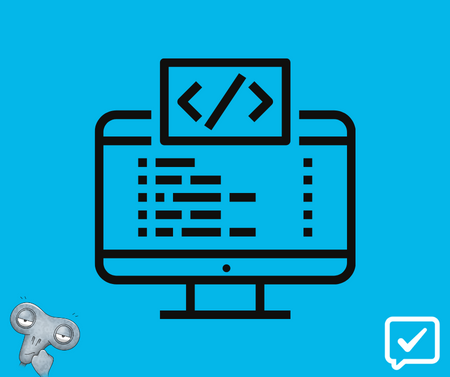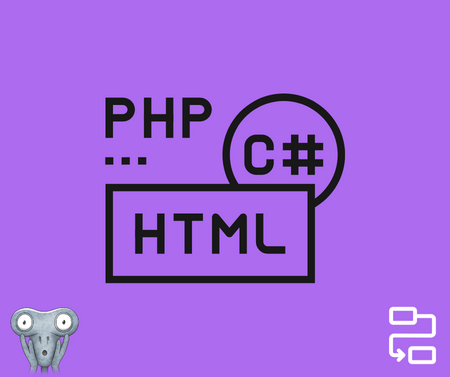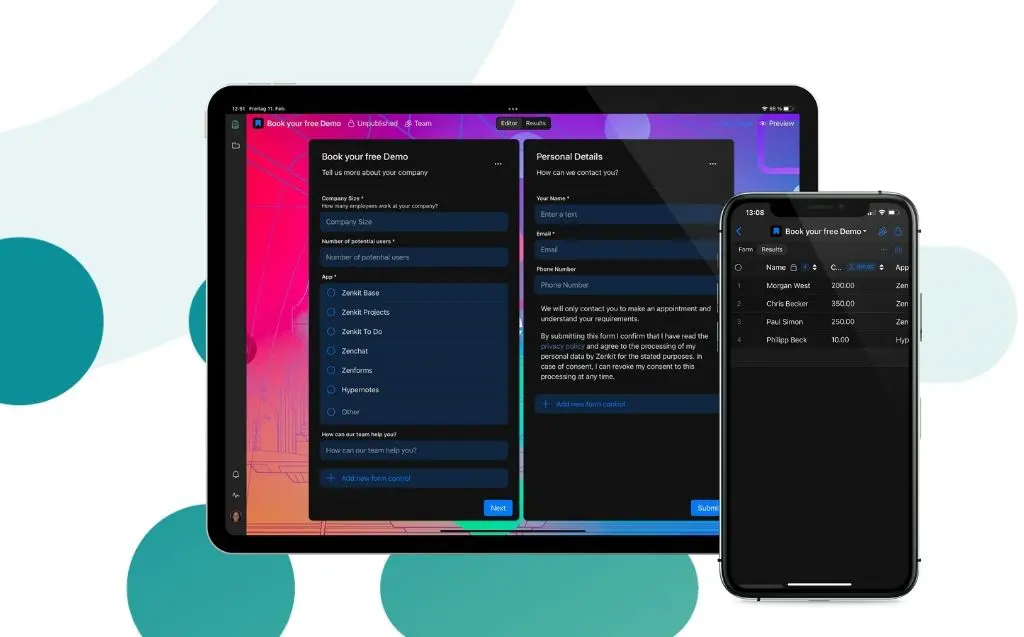The Importance of No-Code Form Builders for Small Businesses
No-code form builders let you ask the important questions without all the code!

No-code is rapidly becoming an essential component of business development. It enables businesses with a limited budget/cash flow (particularly smaller businesses and start-ups) to grow digitally without worrying about a lack of development skills or an inability to find the ideal software developer (who can also be expensive).
There are numerous mediums in which no-code can be used to improve a business’s self-growth. We’ll be focusing on no-code form builders today, after taking a brief look at no-code app development platforms the other week.
What Is No-Code Development?
Before delving into the significance of no-code form builders, it’s perhaps just as important to define no-code development.
Simply put, no-code development is a typical development cycle with one major difference: there are no coding requirements or the need for in-depth coding knowledge. In no-code development, users can create software and applications using a graphical interface that is both interactive and customisable.

This minor distinction alters the entire dynamic of a typical development workflow. For example, because there is no coding involved, you do not require a large team of developers to create an application or software system for you.
Simply sign up for a no-code solution that will automate the entire process for you. As we saw the other week, there are numerous examples of app and website builders, automation platforms, backend management tools, and more that enable you to develop without coding.
The Difference Between Low-Code and No-Code
If you’ve heard of no-code, you’ve probably heard of low-code as well. While they sound similar, there are some key differences.
The target audience for low-code platforms is developers. These platforms may require some technical knowledge but do allow good coders to work faster, especially on menial tasks.
A low-code platform may generate fully functional applications or may require additional coding for specific situations. Low-code development platforms can reduce traditional time spent on development, allowing for faster delivery of business applications. A common advantage is that a broader range of people—not just those with coding skills—can contribute to the application’s development.

No-code platforms, on the other hand, are designed for business users. These platforms do not support manual code editing and instead focus on providing the best and most user-friendly user experience possible while abstracting away from technical details. As such, the more straightforward the user interface, the better it is suited to business users.
What Is an Online Form Builder?
A web form, also called an HTML form, is an online page that allows for user input. It is an interactive page that mimics a paper document or form, where users fill out particular fields. These forms serve as an effective communication link between businesses and website visitors, allowing both parties to exchange information.

One of the most significant advantages of using an online form builder is the ability to create various types of forms for users as well as internal team members. Forms can be easily configured, shared, managed, and used to capture leads, build an email list, create marketing campaigns, gather customer feedback, and so on.
The Advantage of No-Code Form Builders

A Reduced Learning Curve and Faster Form Building
As previously stated, no-code applications require no prior coding knowledge to make the most of them and move your idea from the “brainstorming” stage to the “implementation” stage.
No-code platforms present form creation in a visual, intuitive environment, allowing new users to navigate form creation independently.
The easy-to-use tools found in form builders, such as “drag-and-drop” and pre-made questioning formats (checkboxes, multiple-choice, drop-down menus, and so on), make such platforms accessible to anyone, regardless of skill level.
Cost-Effective
Code-required form builders (even those that utilise “low-code”) restrict form building to users with a more advanced understanding of technology and app development. Hiring new team members to complete form creation or wasting time attempting to understand a code-based platform results in expensive personnel investments and wasted time. A no-code form builder streamlines and simplifies form creation, allowing any member of your team to master form creation without the need to hire someone new or invest in coding tutorials.
Continuous Optimisation
The “drag-and-drop” functionality of a form builder, as well as the ease with which questions can be customised, allows for more frequent form optimisation.

The ability to create form templates in Zenforms, for example, allows you to return to your digital creations and make changes as needed. This means that your forms can continuously grow and be optimised as your business grows and its needs deepen.
Get Rid of Missed Work Requests and Cluttered Email Inboxes
You can avoid missing out on important work requests and cluttered email inboxes by using an online form-building tool. Zenforms’ “iframe” feature, for example, allows you to easily embed a form onto your website so that all user requests are automatically added to Zenforms (and thus the rest of your Zenkit Suite database). This eliminates the need to overly rely on third-party platforms like email, streamlining your workflow and reducing cluttered email inboxes.
Improved Lead Generation
Creating traffic and leads is perhaps the most difficult task for any business.
Using an online form builder allows businesses to acquire and differentiate leads based on the information provided by the leads themselves. Contact information for leads is gathered via online forms, and you can use it to promote products, communicate with visitors, and persuade them to make a purchase.
Usage Simplicity
One of the primary advantages of online form builder tools, such as Zenforms, is their ease of use. The form’s drag-and-drop functionality enables users to quickly create forms without having to write any code. Furthermore, with its variety of question types, you can easily tailor your form to meet the changing needs of your business and to connect better with your user base.
Conducting Market Research
To create a product that resonates with your target audience’s specific needs, you must first understand their expectations and interests. Online form builders can assist businesses in creating customised surveys to collect information about their target audience. The collected data provides you with valuable insights that you can use to identify areas for improvement in your product/services, make well-researched decisions, and stay current on market trends.

Furthermore, when you use an online form builder like Zenforms, all your collected data is compiled into the Zenkit database, allowing you to use the rest of the Zenkit Suite (such as Base & Hypernotes) to analyse your data and create a powerful knowledge base on which to build your business.
Customisation
When using an online form builder to manage work requests and other tasks, you can easily customise it to include specific details about your company or project in order to connect with those who truly matter. Adding tailored questions or unique question formats such as drop-down menus or short/long answer sections are just a couple of examples of tailoring your user’s experience to improve their overall experience.
Reduces Manual Work
One of the most significant advantages of using an online form builder is its ability to integrate with other apps. This means you won’t have to invest in additional tools, which will save your business money. Furthermore, these tools eliminate the need for traditional pen-and-paper forms, which are both time-consuming and tedious. Data can be collected, organised, accessed, and shared digitally using online form builders.
Budget-Friendly
While not all online form builders are inexpensive, apps such as Zenforms provide the complete form-building experience at an affordable price. Zenforms is free to use (along with the rest of the Zenkit Suite), and the team form-building experience can be further enhanced with transparent and cost-effective pricing.
Zenforms as a No-Code Form Builder

Zenforms is a no-code web form application that allows you to create forms and surveys to connect with those who matter the most to you. It is designed to be adaptable, user-friendly, and ideal for collaboration. Its applications are virtually limitless thanks to a wide range of intuitive and creative form-building features.
Create standalone forms with a single click, without the need for a website. Alternatively, you can embed a form on your existing website using an “iframe.”
Zenforms enables you to better understand ongoing projects, collect valuable data for the next product launch, or simply collect valuable feedback from your community!
Perhaps the best aspect of Zenforms is its integration with the rest of the Zenkit Suite!

So, once you’ve collected your data with Zenforms, you can use To Do to create tasks, Hypernotes to create knowledge bases, Projects to analyse results, Base to structure work, and Zenchat to communicate with your team!
Final Thoughts
Without a doubt, no-code is an impressive and powerful business tool. It opens opportunities that many people previously thought were out of reach without extensive coding knowledge or the assistance of a professional. Now, businesses can be self-sufficient and learn to grow digitally.
With no-code form builders, businesses and individuals are offered an affordable and reliable means of connecting to their user base. This opens the door to a better understanding of user needs and, as a result, a more sustainable and effective business model and practice.
Thanks to no-code form builders like Zenforms, you can start the conversation with questions, not code.
FREE 20 MIN. CONSULTATION WITH A PROJECT MANAGEMENT EXPERT
Wanna see how to simplify your workflow with Zenkit in less than a day?
Book a Live Demo